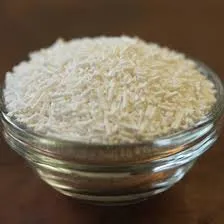
Exploring the Impact and Uses of E296 Food Additive in Modern Cuisine
Understanding E296 The Food Additive with a Sweet Twist
In the world of food additives, E296, also known as malic acid, plays a fascinating and versatile role. Often used in various food products, this organic compound has become a staple in the food industry due to its unique properties and benefits.
Malic acid is a naturally occurring substance found in various fruits, especially apples. It is responsible for the tart flavor in apples and serves as a crucial component in the overall taste profile of many other fruits. Due to its natural origin, malic acid has gained acceptance among consumers seeking natural ingredients in their food.
Understanding E296 The Food Additive with a Sweet Twist
In addition to its flavor-enhancing capabilities, E296 also acts as a preservative. It helps to inhibit the growth of spoilage bacteria and molds, extending the shelf life of various food products. This property is especially valuable in ready-to-eat meals, sauces, and dressings, ensuring that consumers receive safe and high-quality products.
e296 food additive

One notable aspect of malic acid is its role as a chelating agent. It can bind to metal ions in food, preventing undesirable reactions that may lead to off-flavors or color changes. This quality is particularly beneficial in processed foods, where maintaining visual and taste integrity is crucial.
Despite its many advantages, the use of E296 is not without controversy. Some consumers are wary of food additives in general, fearing potential health risks. However, regulatory bodies such as the European Food Safety Authority (EFSA) and the U.S. Food and Drug Administration (FDA) classify malic acid as safe for consumption. This designation provides reassurance that when used within established limits, E296 poses no significant risk to health.
Furthermore, malic acid is being explored for its potential health benefits. It has been linked to improved energy production in the body, with some studies suggesting that it may enhance exercise performance and reduce muscle fatigue. Although more research is needed, these findings have spurred interest in malic acid beyond its uses in food.
In conclusion, E296, or malic acid, is a multifaceted food additive that enriches the culinary experience. Its ability to enhance flavor, extend shelf life, and maintain product integrity makes it an invaluable asset in the food industry. As consumers continue to seek natural ingredients and transparency in food production, malic acid’s natural origins and safety profile may further solidify its place in the pantries of the future. Understanding food additives like E296 is essential not only for industry professionals but also for consumers who wish to make informed choices about the foods they enjoy.
-
Pure Sodium Dichloroisocyanurate Dihydrate | Powerful DisinfectantNewsAug.29,2025
-
Industrial Chemicals: Quality & Purity for Every IndustryNewsAug.28,2025
-
Nitrile Rubber Honoring Strict Production StandardsNewsAug.22,2025
-
Aspartame Ingredients Honoring Food Safety ValuesNewsAug.22,2025
-
Fertilizer for Balanced Plant NutritionNewsAug.22,2025
-
Cyanide Gold Processing with High Purity AdditivesNewsAug.22,2025
-
Formic Acid in Textile Dyeing ApplicationsNewsAug.22,2025
Hebei Tenger Chemical Technology Co., Ltd. focuses on the chemical industry and is committed to the export service of chemical raw materials.
-

view more DiethanolisopropanolamineIn the ever-growing field of chemical solutions, diethanolisopropanolamine (DEIPA) stands out as a versatile and important compound. Due to its unique chemical structure and properties, DEIPA is of interest to various industries including construction, personal care, and agriculture. -

view more TriisopropanolamineTriisopropanolamine (TIPA) alkanol amine substance, is a kind of alcohol amine compound with amino and alcohol hydroxyl, and because of its molecules contains both amino and hydroxyl. -

view more Tetramethyl Thiuram DisulfideTetramethyl thiuram disulfide, also known as TMTD, is a white to light-yellow powder with a distinct sulfur-like odor. It is soluble in organic solvents such as benzene, acetone, and ethyl acetate, making it highly versatile for use in different formulations. TMTD is known for its excellent vulcanization acceleration properties, which makes it a key ingredient in the production of rubber products. Additionally, it acts as an effective fungicide and bactericide, making it valuable in agricultural applications. Its high purity and stability ensure consistent performance, making it a preferred choice for manufacturers across various industries.





